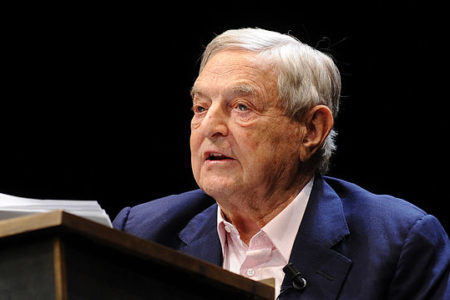
For six decades or more, America’s political history has been driven by cultural warfare. This is usually traced to the social revolutions of the 1960s, but it began earlier. Culture War 1.0 began in the 1950s as religious enthusiasts sought to win hearts, minds, and souls for Christ in a society that was rapidly liberalizing and secularizing. That is the war that drifted to a whimpering end as recently as 2013, when the Supreme Court handed down culturally significant rulings bolstering the case for same-sex marriage. In 2015, the Court gave same-sex marriage its full endorsement, ruling in Obergefell v. Hodges that restrictions on same-sex marriages were unconstitutional. By this point, Culture War 1.0 was over.
This first culture war was mostly fought over issues of religious faith and morality, such as whether creationism was a viable alternative to the theory of biological evolution and whether limits should be placed on institutionalizing Christian values in the public sphere. In Culture War 2.0, the supernatural, metaphysics, and even religion more broadly have become irrelevant. The demands of Christian faith and morality have been replaced by something far more threatening to a society founded on Enlightenment principles.
Culture War 2.0 rotates around three axes: 1) the new rules of engagement, 2) the correspondence theory of truth, and 3) the role intersectionality ought to play in everyone’s worldview. Let’s examine each of these features to see how Culture War 2.0 has made allies out of former ideological enemies. Call this The Great Realignment.
Rules of Engagement
The rules of engagement relate to how we deal with our disagreements. In Culture War 1.0, if an evolutionary biologist gave a public lecture about the age of the Earth based on geological dating techniques, creationist detractors would issue a response, insist that such dating techniques are biased, challenge him to a debate, and ask pointed—if unfairly loaded—questions during the Q&A session.
In Culture War 2.0, disagreements with a speaker are sometimes met with attempts at de-platforming: rowdy campaigns for the invitation to be rescinded before the speech can be delivered. If this is unsuccessful, critics may resort to disrupting the speaker by screaming and shouting, engaging noise makers, pulling the fire alarm, or ripping out the speaker wires. The goal is not to counter the speaker with better arguments or even to insist on an alternative view, but to prevent the speaker from airing her views at all.
Today’s left-wing culture warriors are not roused to action only by speakers whose views run afoul of the new moral orthodoxy. They combat “problematic” ideas anywhere they’re found, including peer-reviewed academic journals. In 2017, Portland State University Political Science Professor Bruce Gilley published a peer-reviewed article titled “The Case for Colonialism” in Third World Quarterly. Many academicians were enraged, but rather than write a rebuttal or challenge Gilley to a public debate (as they might have done in the era of Culture War 1.0), they circulated a popular petition demanding that Portland State rescind his tenure, fire him, and even take away his Ph.D. “The Case for Colonialism” was eventually withdrawn after the journal editor “received serious and credible threats of personal violence.”
Christian organizations have a long history of censorship, and this has continued to some extent even in recent decades. All the same, such an attempt to suppress an academic article would have been almost unthinkable during Culture War 1.0. There were some analogous attempts on the part of Christians during precursors of this culture war, as for example in the incidents surrounding Tennessee’s Butler Act of 1925 and the subsequent “Scopes Monkey Trial.” And religious would-be censors during Culture War 1.0 did occasionally make attempts on novels and movies interpreted as blasphemous or obscene, such as The Last Temptation of Christ (1988). But for the most part, Creationists in the first Culture War didn’t want evolutionary biologists to lose their tenure and their doctorates. They wanted to debate and prove them wrong.
One common theme running throughout Culture War 2.0 is the idea, endorsed by many well-meaning activists, that speech is violence. And if speech is violence, the thinking goes, then we must combat speech with the same vigor we use to combat physical violence. This entails that we cannot engage supposedly violent speech, sometimes referred to indiscriminately as “hate speech,” merely with words. If someone is being punched in the face, it’s futile to say, “Would you kindly stop?” or “This is not an ethical way to behave.” You need to take action. The rules of engagement change if speech cannot be met with speech—with written rebuttals, debates, and Q&A sessions. If speech is violence, it must either be prevented or stopped with something beyond speech, such as punching Nazis, throwing milkshakes, or using institutional mechanisms to smother unwanted discourse.
Correspondence Theory of Truth
The correspondence theory of truth basically states that objective truth exists and we can know something about it through evidence and reason. That is, there are objective truths to be known, and we gain reliable knowledge about them when our beliefs align with reality. It’s termed “the correspondence theory of truth” because a statement is considered true when it corresponds with reality and false when it does not.
In Culture War 1.0, the correspondence theory of truth was a given on all sides. In 2014, even as Culture War 1.0 was ending, Bill Nye “the Science Guy” debated Ken Ham from “Answers in Genesis” over the age of the Earth, with Nye arguing the evidence demonstrated Earth was considerably older than Ham claimed. Despite their differences, both believed there was a truth “out there” and that we could know it through science, reason, and, in Ham’s case, faith and Scripture. And, as was common in Culture War 1.0, Nye and Ham also agreed on the rules of engagement—structured debate, which they entered with respect for the process.
In Culture War 2.0 the correspondence theory of truth—with its commitment to the idea that there are better and worse ways to come to knowledge about an objectively knowable world—is no longer common ground. For those on one side of this latest fight, the correspondence theory of truth has been replaced with more subjective ways of knowing. But this is not merely a turn away from objectivity to subjectivity. Culture War 2.0 is marked by one side’s turn toward understanding knowledge as determined by identity markers like race, gender, disability status, and sexual orientation. And—so the theory goes—the more “oppression variables” comprise one’s identity, the clearer one’s understanding of reality becomes.
Think about it like this: cis-hetero white males see the world in grayscale. Every oppression characteristic gives one access to an additional color. So cis-hetero black males see the world in grayscale and blue. Cis-lesbian black females see the world in grayscale, blue, and orange. Trans non-binary disabled uneducated black immigrants see the world in a panoply of colors and thus are positioned to have a more accurate view of reality. In Culture War 2.0, correspondence theories of truth aren’t just dead: truth itself is inaccessible to people who do not possess the right identity characteristics.
Intersectionality
Kimberlé Crenshaw, Professor of Law at Columbia Law School and the University of California, Los Angeles, defined and popularized the term intersectionality. In essence, intersectionality is the idea that seemingly separate identities like black and gay and female overlap and compound one’s experience of oppression. For example, black women are oppressed in ways recognizably different from those applying to white women or black men. According to intersectionalists, this is the indispensable insight needed to understand social and political reality. It is the best way to understand how various identity characteristics inform public perceptions and confer unearned advantages or “privilege” on some groups (notably white heterosexual men) while others remain oppressed.
Acceptance or rejection of an intersectional mindset is a fault line in Culture War 2.0. Specifically, the dividing line defining sides in this culture war arises along one’s answers to what role intersectionality should play in how we understand reality and how we design legal, economic, and educational systems. For intersectionalists, an intersectional understanding of the world is imperative for social justice, equity, and remediating past and ongoing injustices like racism and homophobia. Why? Because reliable knowledge is tied to identity. For others, ideas such as Crenshaw’s might be helpful tools to understand how a person could experience specific forms of oppression, but it ends there. There’s no moral or epistemological imperative to use an ideologically interpretive intersectional lens—rather than a traditionally liberal one emphasizing individuality and universal principles—to refashion society and its systems.
The role intersectionality ought to play in forming one’s understanding of the world and in creating systems is causing schisms throughout society—from knitting clubs to clinical medicine and even within the Southern Baptist Convention. Intersectionality is currently dividing Christendom: many younger Millennial Christians believe one must examine scripture through an intersectional lens, while other older, Baby Boomer Christians categorically reject the need for any additional lens to interpret the Bible.
The Great Realignment
This is where it gets bizarre.
Those people who accept the correspondence theory of truth (even though they may not know it by name) agree on the traditional rules of engagement (discourse, debate, dialogue) and do not view intersectionality as a necessary model for getting to the truth. Academicians in this group often adopt some variation of standpoint theory. These individuals are on one side of Culture War 2.0, and they include many liberal atheists and conservative Christians.
Those on the other side of 2.0 do not subscribe to the correspondence theory of truth, believe speech should be shut down if it’s hurtful or potentially harmful, and think intersectional, transformative approaches are necessary to refashion systems. These people are also predominantly atheists and Christians: intersectional “woke” atheists and intersectional “woke” Christians.
As a point of contact, I am a non-intersectional, liberal atheist. If a conservative Christian believes Jesus walked on water—and believes this either is or is not true for everyone regardless of race or gender—and if she values discourse and adheres to basic rules of engagement, then she is closer to my worldview than an atheist who believes race and gender play a role in determining objective truth and that her opponents should not be allowed to air what she considers harmful views.
Many conservative Christians understand this intuitively. So do many liberal atheists. And that’s what makes this Great Realignment of Culture War 2.0 so bizarre. It’s no longer liberals and atheists versus conservatives and Christians. It’s some atheists aligning with some Christians and other atheists aligning with other Christians. And each, in turn, believes that what’s at stake is no less than the future of Western Civilization. How this will play out depends on who wins Culture War 2.0.
A Final Thought
It may be that there is more to this picture than we are yet able to see. Though this article captures my current thinking on the topic, it may still be incomplete because it takes for the whole what will turn out to be only a part. Ultimately, the current culture war could hinge on the conflict between those trying to preserve cognitive liberty, along with the practices and institutions designed to support or strengthen it, and those who are trying to shut it down, or at least passively accepting its decline. At this stage, however, it may be too early to tell—and anyway, it is a subject for another day.
via American Mind






Arnold
SN, I am a Christian and value the idea of discourse…up to a point. When push comes to shove, the gospel of the Kingdom of God is not open to debate from God’s perspective. It is settled with the resurrection of Christ which we rest our faith and worldview upon. Much of what Peter is discussing could be approached from a Christian and God-oriented world view. SN, please find other cultural warriors to write who know the culture war stuff of Boghossian but can proclaim it with the power and authority of the Christian gospel. We need a set of Christian warriors who can dismantle socialism’s deceptions and faulty pillars of partial truths with the tools of the entire Word of God and translate that into vernacular that our culture can understand.
Karen Chidwick
As I was forced into a struggle session by my sister-in-law and her African husband about how my husband and I were not acknowledging his “lived experience”, I was puzzled by a few things. What in the world do his experiences of being treated poorly or being rejected for a job and his perceived slight have to do with how much worse it was for him than anyone else who may have had other negative experiences? When did the concept of an absolute truth and reason get flipped upside down? And what happened to trusting in God and his guidance for the path of your life and safety? Afterall, we’re all believers and seekers of truth, and they should have been more so since they both had master’s degrees in Christian Studies. Or so I thought.
It has been a rough few years since that time. My SIL still holds a tight grudge that tears at my husband. But we know the truth, the Source of truth, and we recognize mental illness and the pathology of victim thinking and will not surrender any of it to their new religion of CRT, BLM, Marxism, Social Justice, etc. We are sad that they have chosen to abandon their faith to pursue something that gives them the perception of power, but we are not children playing games in the marketplace and choose to stand on truth and live in reality.